Welcome to my wee corner of Substack. I am a seasonal artist living on the Isle of Arran, off the west coast of Scotland. I am the custodian of approximately two acres of land that includes a woodland, a meadow and my wee garden. I offer a seasonal book arts project for paid subscribers if you are interested and you can read more about that HERE. Grab a cuppa and lets delve into our relationship with the shifting seasons…
Seasonal moodboards are fundamental to my creative practice. It is the times of the year when I ‘light the touch paper of my creativity.’ The process of creating the boards connects me deeply with the seasonal shifts and how I am feeling at that time. How I interpret the natural world around me shifts year by year and that is closely reflected in my creative work thanks to my moodboards. I thought it might be helpful to share my practice as my students often have questions around this topic.
I create moodboards on all sorts of places. Backs of doors are a favourite at the turn of the season as I soak up the new emerging colour palette, shapes and textures.
However, some of my most inspirational moodboards have been A6 in size as, in that context, I need real focus. Folk usually find a size that suits them but I like to mix it up as the seasons unfold. That begs the question how often do I create a moodboard. The answer to that is, often. My creative brain thinks in collections rather than single projects so a moodboard will help me ground a new collection.
A good example of that was from my Lost World Collection last year.
The collection focused on celebrating the reforestation work that is continuing on the island I call home. Already, it has made a huge difference to biodiversity in those areas as native trees are reintroduced in favour of plantation trees. The moodboard is made up of images that started to draw my thinking together. Magazines are an excellent source of moodboard fodder but I also use sketches and wee paintings of my own. It is in the placing of the elements that the magic begins to happen for me. Before that stage though is the gathering of the fodder and I can’t rush this. I let this process take over a week or more as I begin with an empty basket and bit by bit gather images that I think might work.
Once the gathering process is finished I can start the mooboard and select the base. This moodboard was on an A3 piece of mountboard that was damaged so no use for framing but perfect for me. I often have a background colour palette (in this case green) and then other colours, patterns and textures are picked out in the foreground with well placed images. It takes me some time before I am ready to stick down and I think that is important. Committing too early with glue has often led to frustration with the process. Sometimes I let the draft finished board just sit with me for a few days and then stick down.
This creative effort to produce a moodboard that speaks to me and my planned collection is then placed somewhere where I can see it as I begin work on the collection. It needs to be highly visible for constant references. This moodboard led to a collection that contained journals and textile pockets and brooches and, if I am honest, I was delighted with it.. It was the fastest ever selling collection for me and I feel I can thank my moodboard for that.

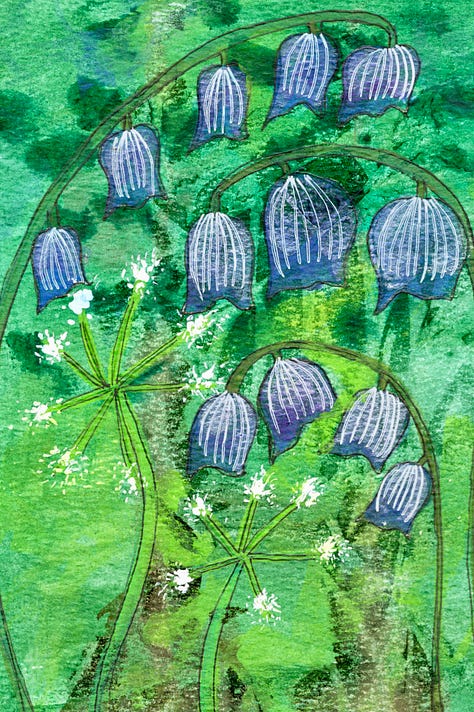

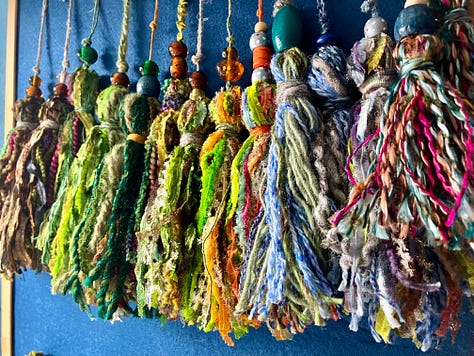
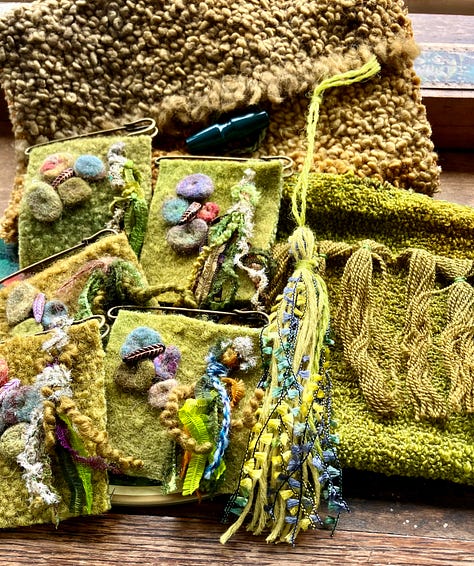
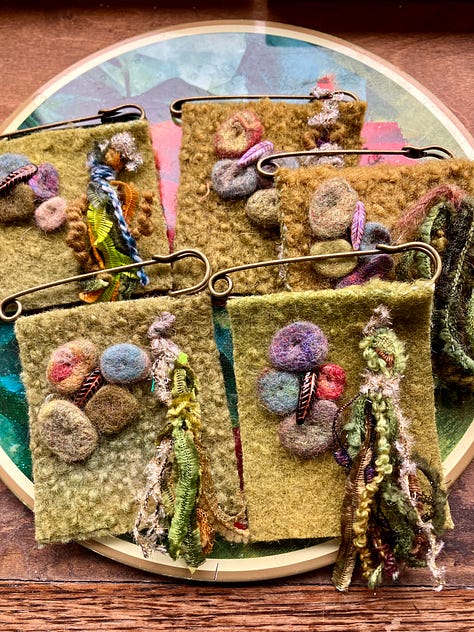

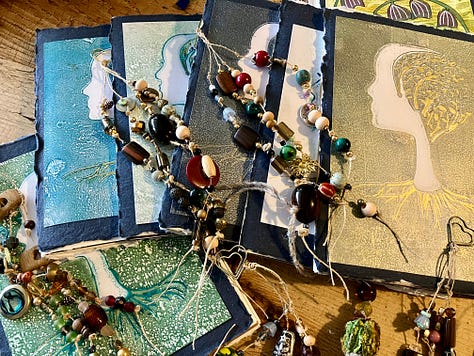
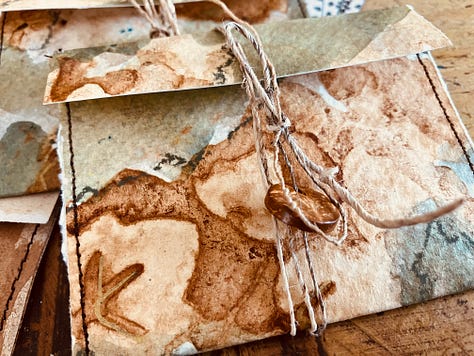
The humble Bluebell quickly became a lead graphic as the reforestation has allowed that species to spread and truly thrive on the island. Plantation pine forests don’t allow for much to grow on the forest floor so this change has been welcomed. In the end the foxglove from the moodboard didn’t make it into the final collection but that is for another creative day…..
One of the questions I get asked a lot is how do I move from moodboard to begin creating new creative work. Colour is always my first point of reference. Once I have lifted the colours I like I use my sketchbook and art journal to shift the thinking on. This collection had journals with original art covers but sometimes the collection will include scanned in images from my original work. Once I have used my sketchbook/art journal I then move into the print studio and create some prints for the collection. I use these as covers and pages in my journals. This then ends my paper trail and I shift to textiles and stitching. It is always in this order as it works so I have never changed it. The stitched items take longer but, by then, I am well embedded in my collection so the quiet times stitching feel, creatively, very secure. I have always found great comfort from stitching and it is well placed towards the end of the creative journey.
Once the collection is finished I always spend some time reviewing it with reference to my moodboard. I ask myself these questions -
What did I include and how well did these elements translate to the collection?
What did I leave out and why?
What could I take forward into new work?
One final question from others is ‘what do I do with all my moodboards?’
If they are on the back of the door I take them apart storing elements away for future projects. If they are smaller and glued down I have two choices. I either keep them in tact because I feel there is more inspiration to come from them in the future or I cut them up to use as journal covers, bookmarks or greeting card elements. Nothing goes in any bin.
In my paid book arts project here on Substack we have been using moodboards in our projects as a way of jumping off into our new seasonal book project. With only a project per season we have time to create a moodboard and, in doing so, we afford our creative brains some time. That is the joy of moodboards. You allow your creative brain the opportunity to contemplate. That contemplation will reward you further down the line.


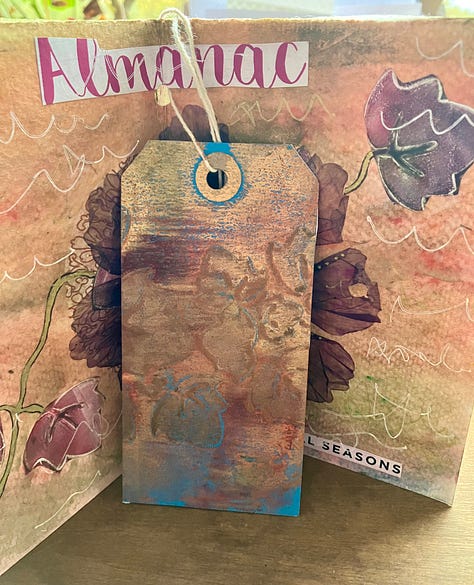

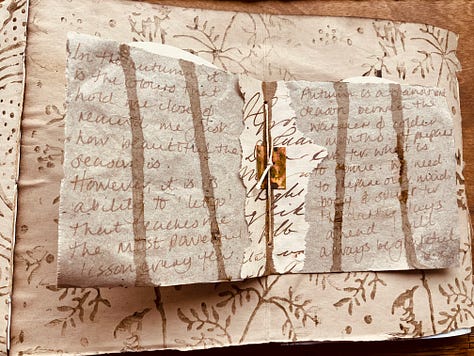
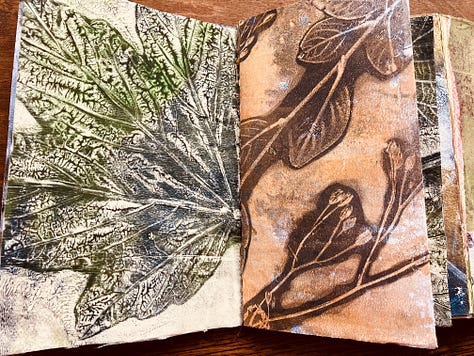
I hope this has been helpful if you are new to moodboards and how you might use them in your creativity. I always let out a little squeal of delight when I am starting to gather for a new moodboard and when it is finished I celebrate with a wee dance around my studio. But that is just me……
Until next time,
Fiona x







Lovely and inspirational!
I really enjoyed reading this Fiona, I love your reflections at the end, they are unusual and thought provoking